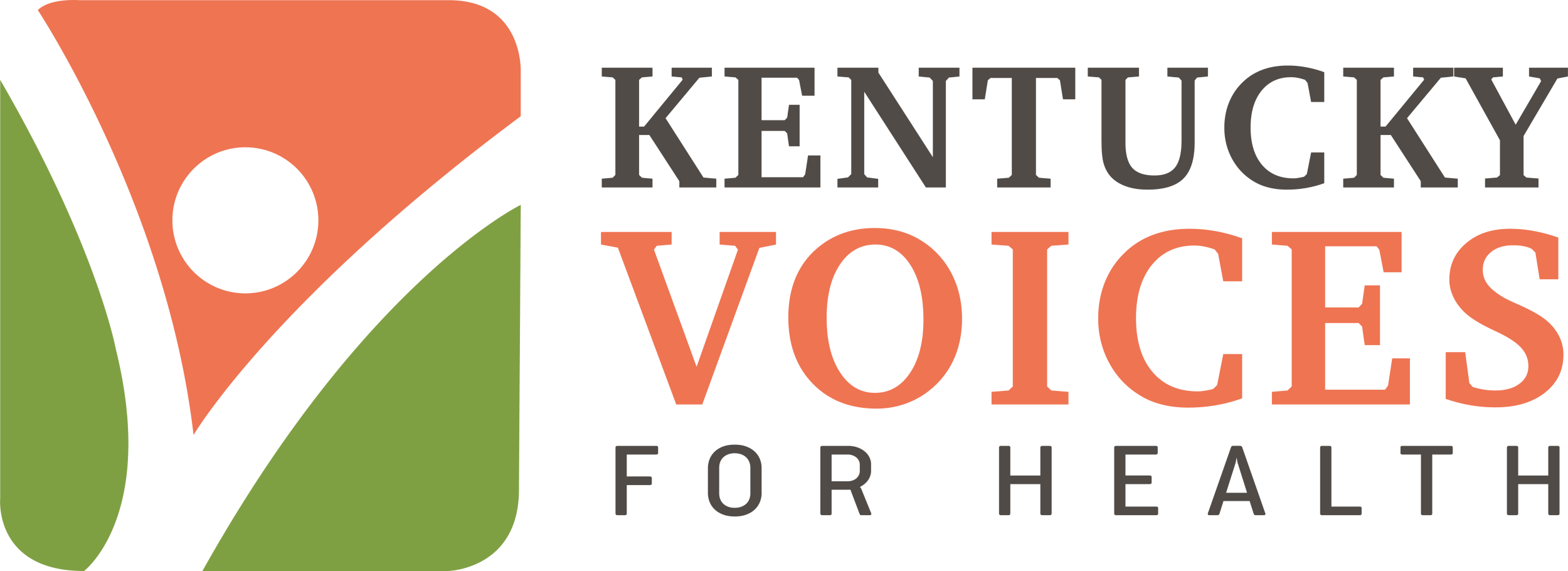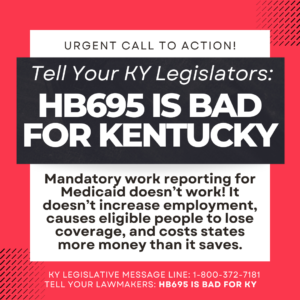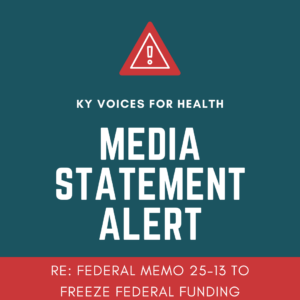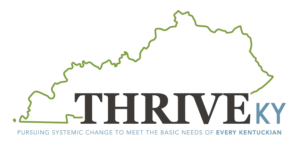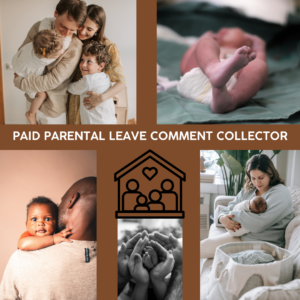When Kentucky students went virtual in March of 2020, the pivot to non-traditional instruction (NTI) was so rapid that many families were left scrambling to find childcare. The extra burden of feeding kids breakfast and lunch quickly took its toll; prior to the pandemic, many families counted on school meals to keep kids from going hungry. That same month, the federal Families First Coronavirus Response Act provided help for families in need, creating the Pandemic EBT (P-EBT) program. The Kentucky Cabinet for Health and Family Services (CHFS) used those federal funds to provide Kentucky families with support to feed students kept home during the COVID-19 pandemic.
Free Meal Programs Help Schools, Prevents Childhood Hunger
About 75% of Kentucky’s students rely on school meals for needed nutrition. Many of the Commonwealth’s schools participate in the National School Lunch Program or offer free meals to all students under the Community Eligibility Provision (CEP). In the 2014-15 school year, 104 of Kentucky’s 173 public school districts provided free breakfast and lunch to all students, covering 279,263 students in 610 schools. By the end of the 2020-21 school year, 1,060 Kentucky schools offered free meals to all students. These federal programs are especially needed in Kentucky, which the USDA lists as one of the hungriest states in the nation. Research shows that children who receive free meals at school perform better academically because they are better able to focus and stay on task. This leads to higher school test scores for all students, not just those at risk of hunger. The saying goes “hungry bellies have no ears” and recent data confirms that if a child is focusing on their hunger, they aren’t able to focus on their education.
The P-EBT program in Kentucky has helped 7 in 10 kids at risk of hunger – feeding more than 600,000 children total.
P-EBT Has Big Benefits!
Like SNAP, P-EBT allows Kentucky families to buy food from farmers markets, grocery stores, or any store with produce, meat, or dairy products that accepts EBT. The $1.1 billion in funds from the United States Department of Agriculture (USDA) can also be used to make online purchases at participating retail sites. The P-EBT program in Kentucky has helped more than 600,000 children at risk of hunger, nearly 7 in 10 kids. And in states where 1 in 5 kids is at risk of hunger, the money has had a big impact. Research also indicates that every SNAP dollar spent brings up to $1.80 back to the community. If your family’s finances changed because of the COVID-19 pandemic, you may be eligible for SNAP! Apply here or by calling (855) 306-8959.
How Much P-EBT Should My Child Get?
Much like the Supplemental Nutrition Assistance Program (SNAP) food assistance program, P-EBT cards were automatically loaded with benefits to purchase food for families. Initially, P-EBT funds went to 541,000 students in Kentucky: those enrolled in SNAP or at schools that offer free lunch programs for all students. The first round of P-EBT funds made it to families in May 2020. The second round of P-EBT expanded to include students at schools with NTI for at least 5 consecutive school days even if they were sometimes “hybrid” classes, students who were enrolled in free or reduced lunch programs at their schools, and every child in a Head Start program. The third round of P-EBT extended the program through October 2021 and covered more than 600,000 Kentucky children. P-EBT benefits provide families with $136.40 per month for students who attended fully remote schools and $81.84 for students who attended hybrid model schools. During the third round of P-EBT, students did not receive the same amount of P-EBT funds each month. The difference is due to the number of days the child was virtual versus hybrid, so there is not a uniform process to calculate the amount each student should have received. The rate to expect for October 2020-May 2021 calculations for each student is $6.82 per eligible school day.
2020-2021 P-EBT Map
Not sure if your student was eligible for P-EBT during the 2020-21 school year? This map shows schools that were eligible through the CEP program in the 2020-21 school year. The map does not include summer P-EBT benefits, just those for the 2020-21 school year.
What You Can Do
For families who meet the classifications for the most recent round of P-EBT who have yet to receive benefits for any given month during October 2020 – May 2021, the reconsideration request process is still available to you for a short period of time. For instance, if your child/ren remained all virtual for the month of April, but you received $81.84 or $0 P-EBT, you will need to contact the Cabinet at (855) 306-8959 to make a reconsideration request. You will need your child/ren’s full name, DOB, and their State Student Identification Number (SSID). You have until July 30, 2021 to apply for reconsideration for P-EBT benefits if your child was denied the benefit for the 2020-21 school year.
For families whose child/ren do not attend a CEP school, you may want to urge your district superintendent to apply for CEP to help Kentucky families impacted by the COVID-19 pandemic and economic slowdown. The deadline to become a CEP school for the 2021-22 school year is September 30th, 2021. If your child’s school is applying for CEP for the upcoming school year, show your support. Urge your local school board or district superintendent to take advantage of these federally funded programs and help end childhood hunger in Kentucky. You can also apply for benefits like free or reduced meals at your child’s school for the 2021-22 school year to qualify for future P-EBT. Once your child is enrolled, contact the Cabinet at (855) 306-8959 to discuss next steps in acquiring P-EBT.
Find answers to frequently asked questions here. (Encuentre aquí las respuestas a las preguntas frecuentes.)
1 in 5 Kentucky kids still experience food insecurity.
The Hunger-Free Summer for Kids Act helps us close the hunger gap.
P-EBT: Summer and Beyond
Many of us are looking forward to the Summer P-EBT benefits that CHFS will be updating within the next month. Families are awaiting information from CHFS on the summer P-EBT program, which is anticipated to provide about $375 per child to reimburse families for the 10 summer weeks children are not in school. The federal funds, provided through a bill co-sponsored by Senator Mitch McConnell called Hunger-Free Summer for Kids Act, will close the food insecurity gap for 1 in 5 Kentucky children who are at risk of going hungry. The program offers P-EBT type benefits to address the challenges many face when physically trying to get to summer feeding sites. This is an issue especially important to rural Kentucky families, where Feeding America says children are most at risk of hunger. No parent should worry their child might go hungry.
School meals provided by federal programs like CEP or the National School Lunch Program offer a safety net for parents who may get no other government benefits. Some parents who may be eligible for SNAP may not be willing to apply or accept the help, but don’t feel stigmatized for accepting P-EBT for their child. Kentucky legislators should change a provision of the CEP that will enable more schools to offer free meals to all students. Many families are unable to get children to summer feeding sites because of restricted hours or lack of transportation. P-EBT gives families access to the same funds used to purchase these summer meals to use when making regular grocery runs.
Traditional summer feeding programs reach just 1 in 7 children, with the summer P-EBT extension, researchers predict that 7 in 10 children will have access to needed food. We know that P-EBT is working, more Kentucky families have access to needed food than ever before thanks to the program. Congress can enact a provision of the American Rescue Plan to provide $25 billion to create a permanent summer EBT program nationwide. Kentucky legislators would be able to make P-EBT benefits available for children every summer, not just during the COVID-19 pandemic. Urge your Congressperson and your Kentucky legislator to turn Pandemic-EBT into Permanent-EBT to keep Kentucky’s children from risk of hunger year round.
‘Hungry bellies have no ears’ & feeding children is never a “handout”. Let’s make Pandemic-EBT into Permanent-EBT.
To learn more about KY Voices for Health, or to become a member, visit kyvoicesforhealth.org/join.
